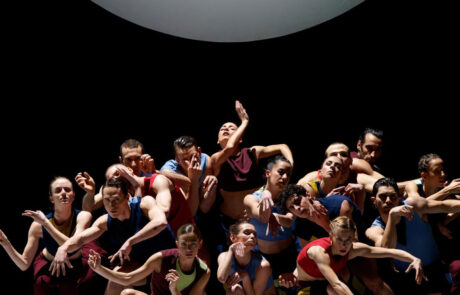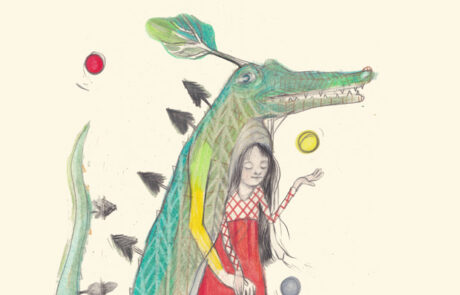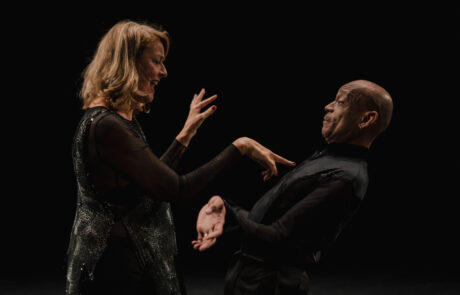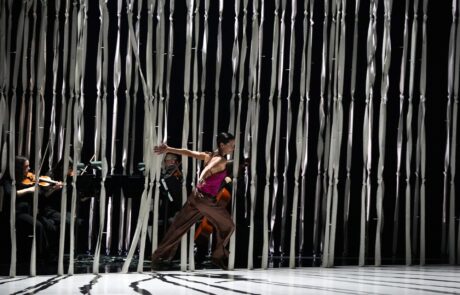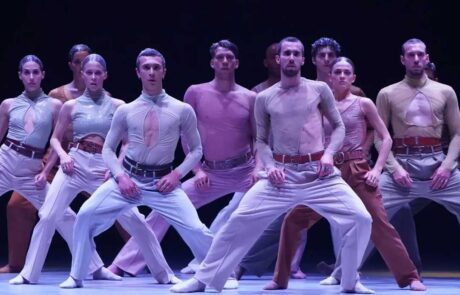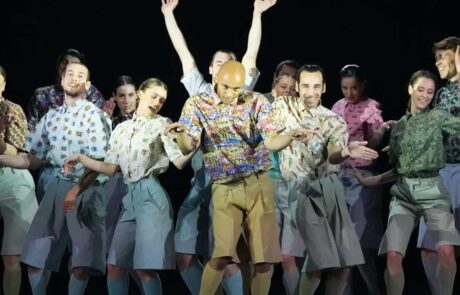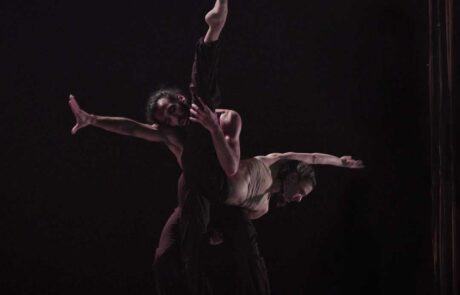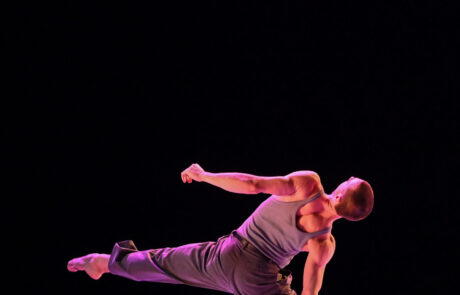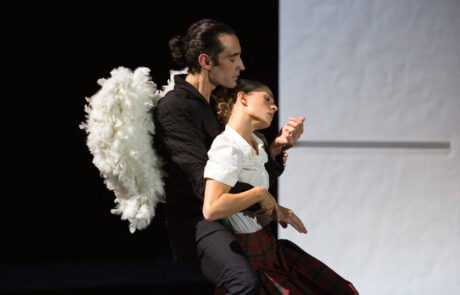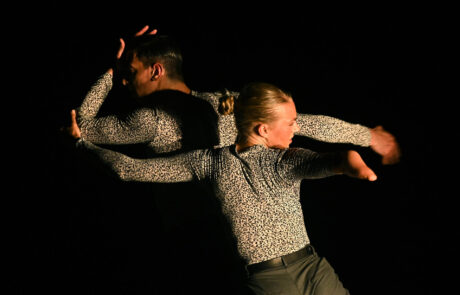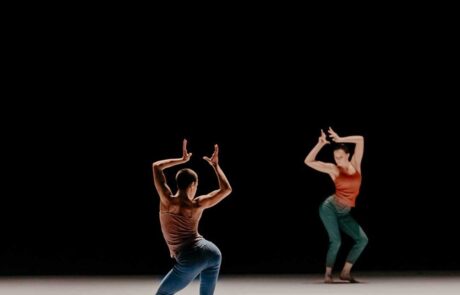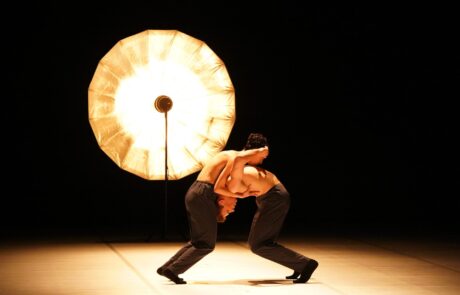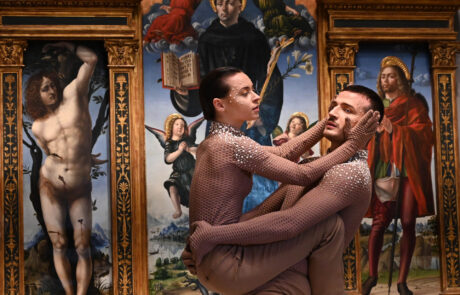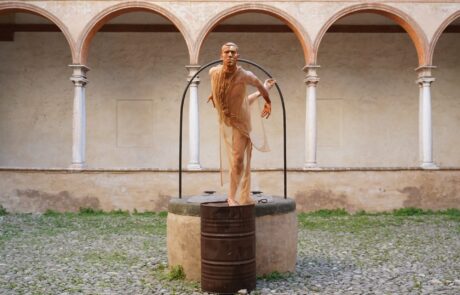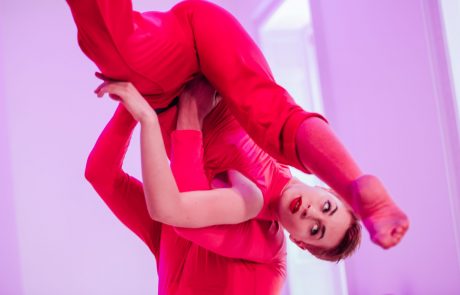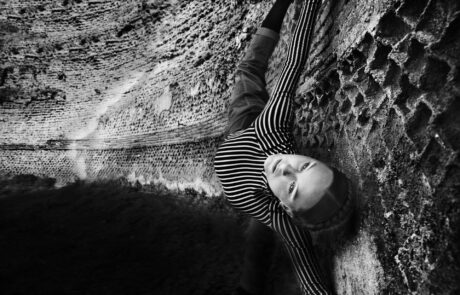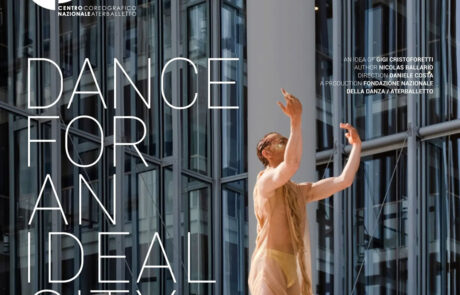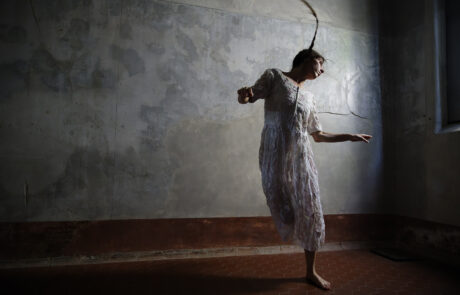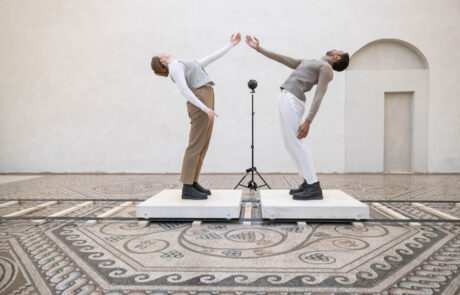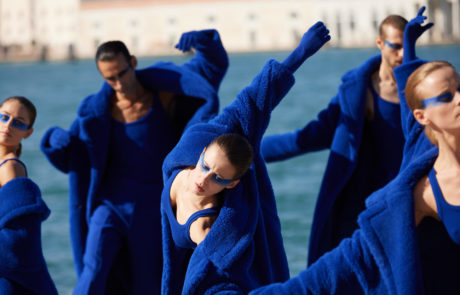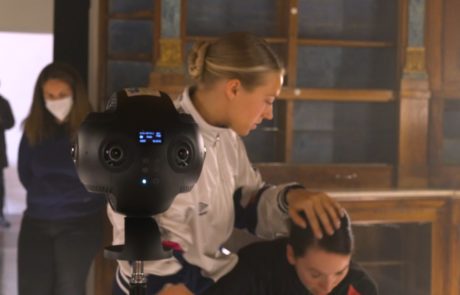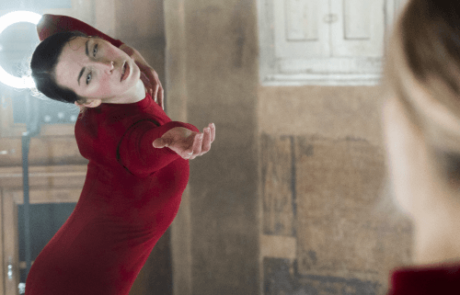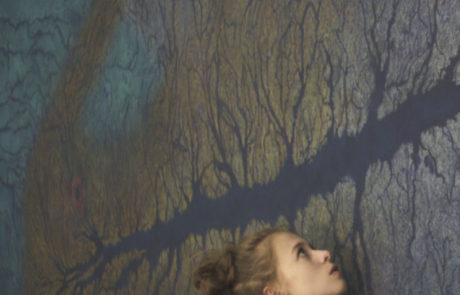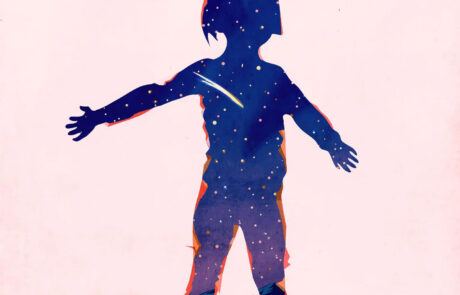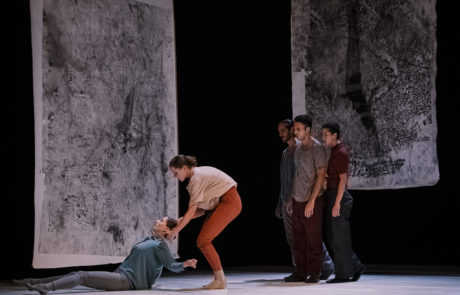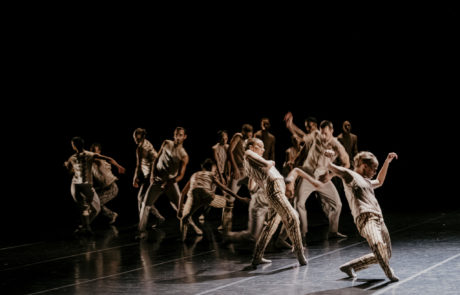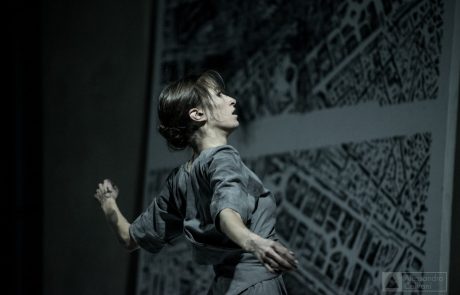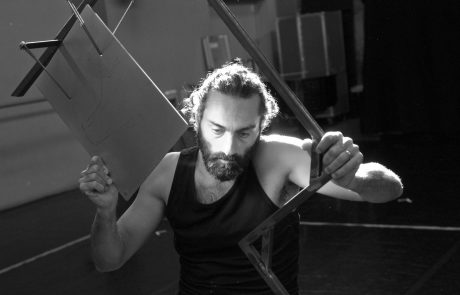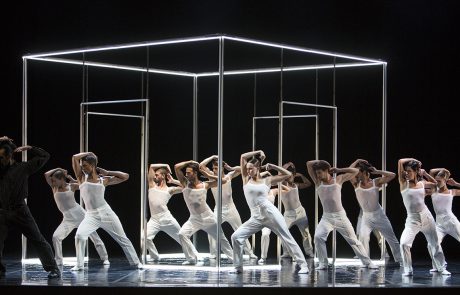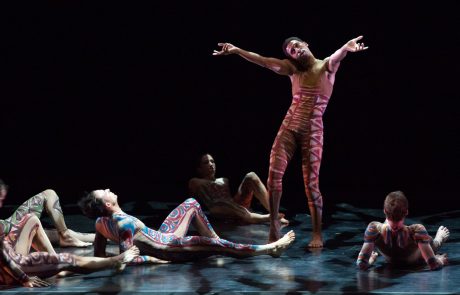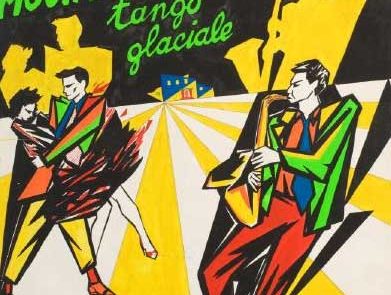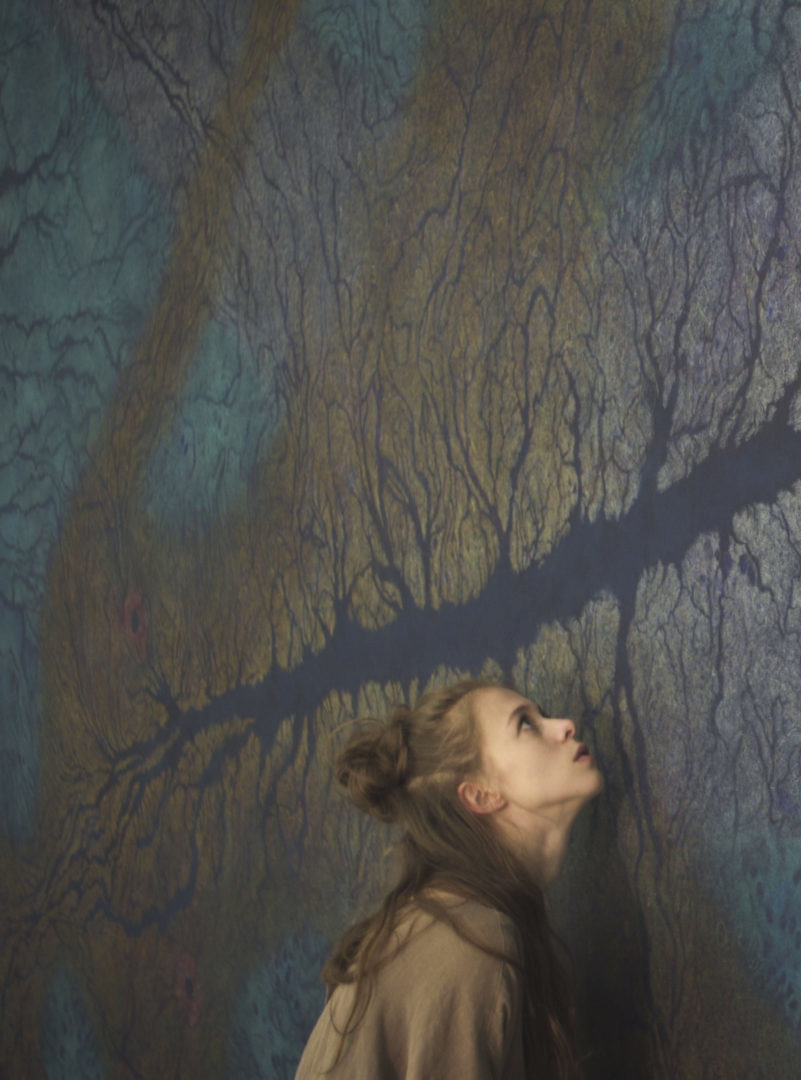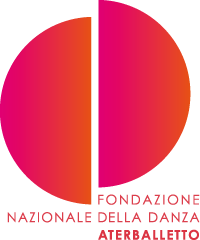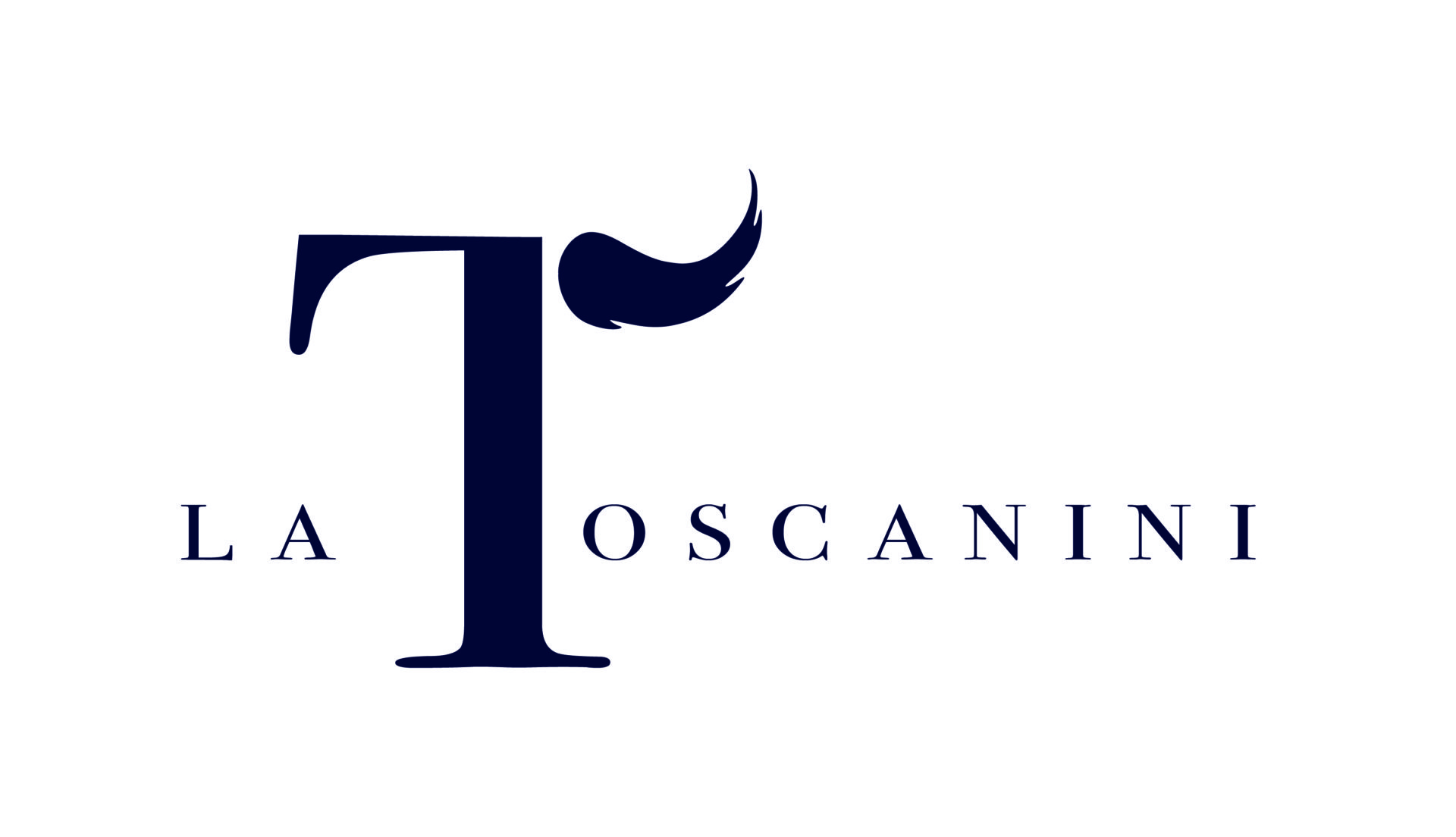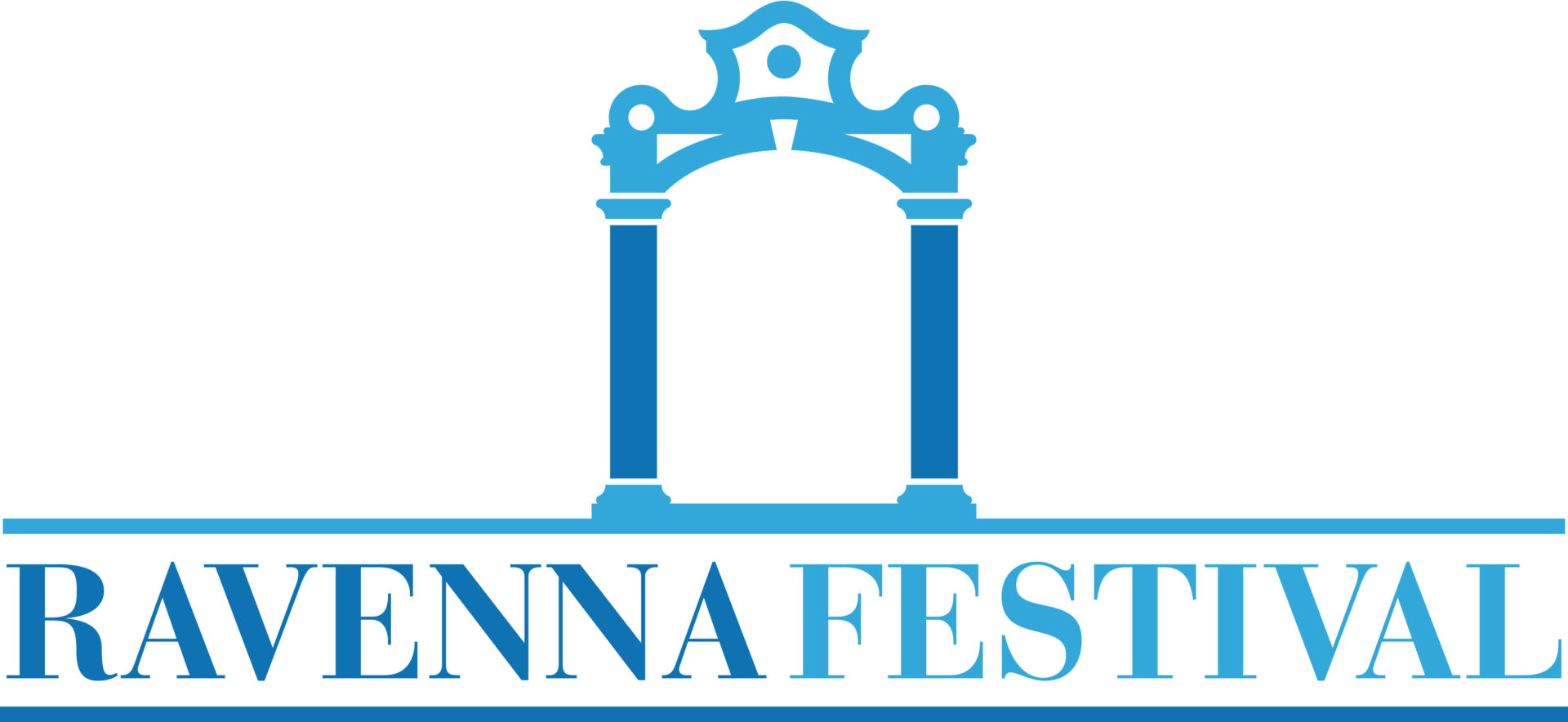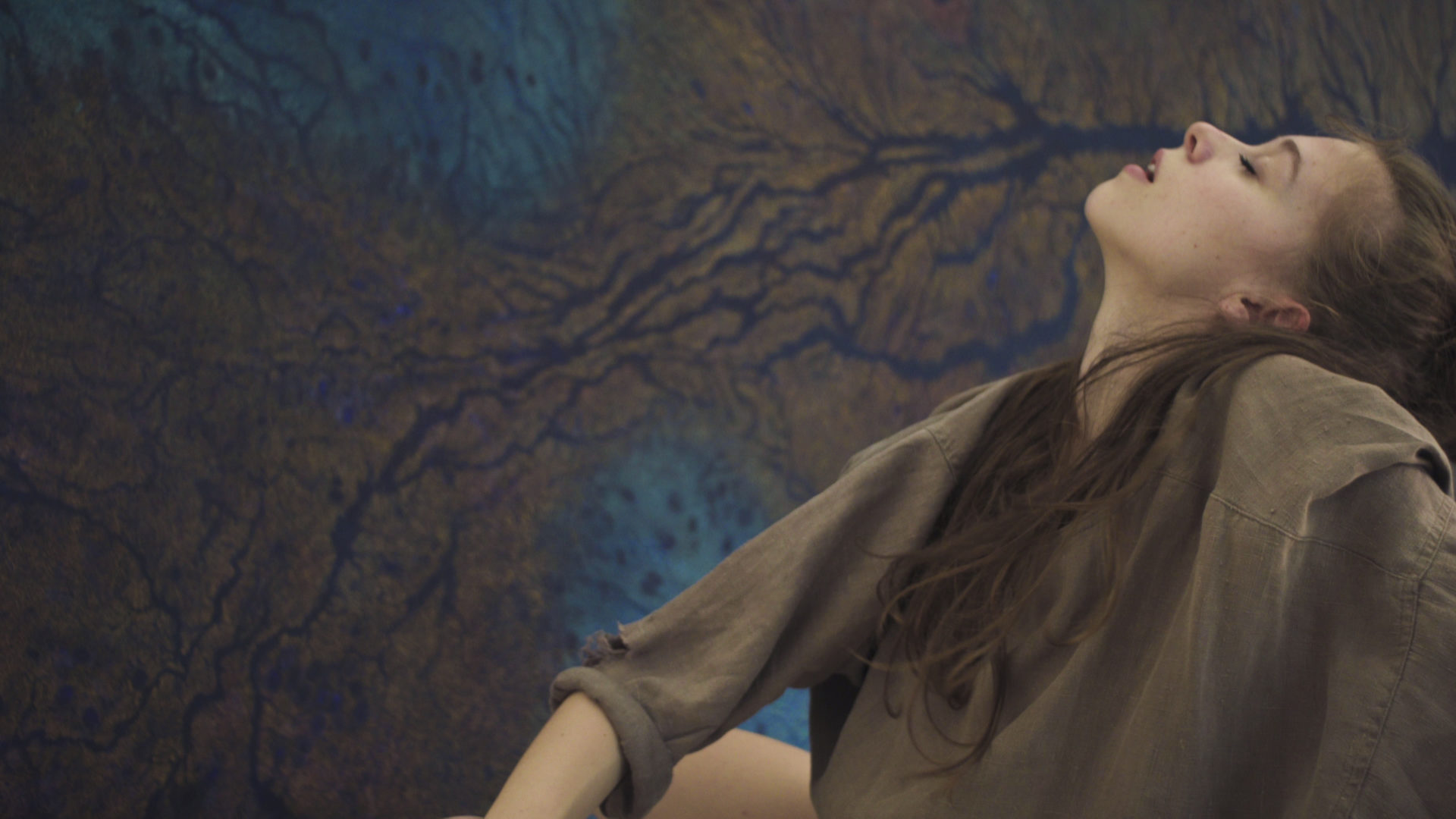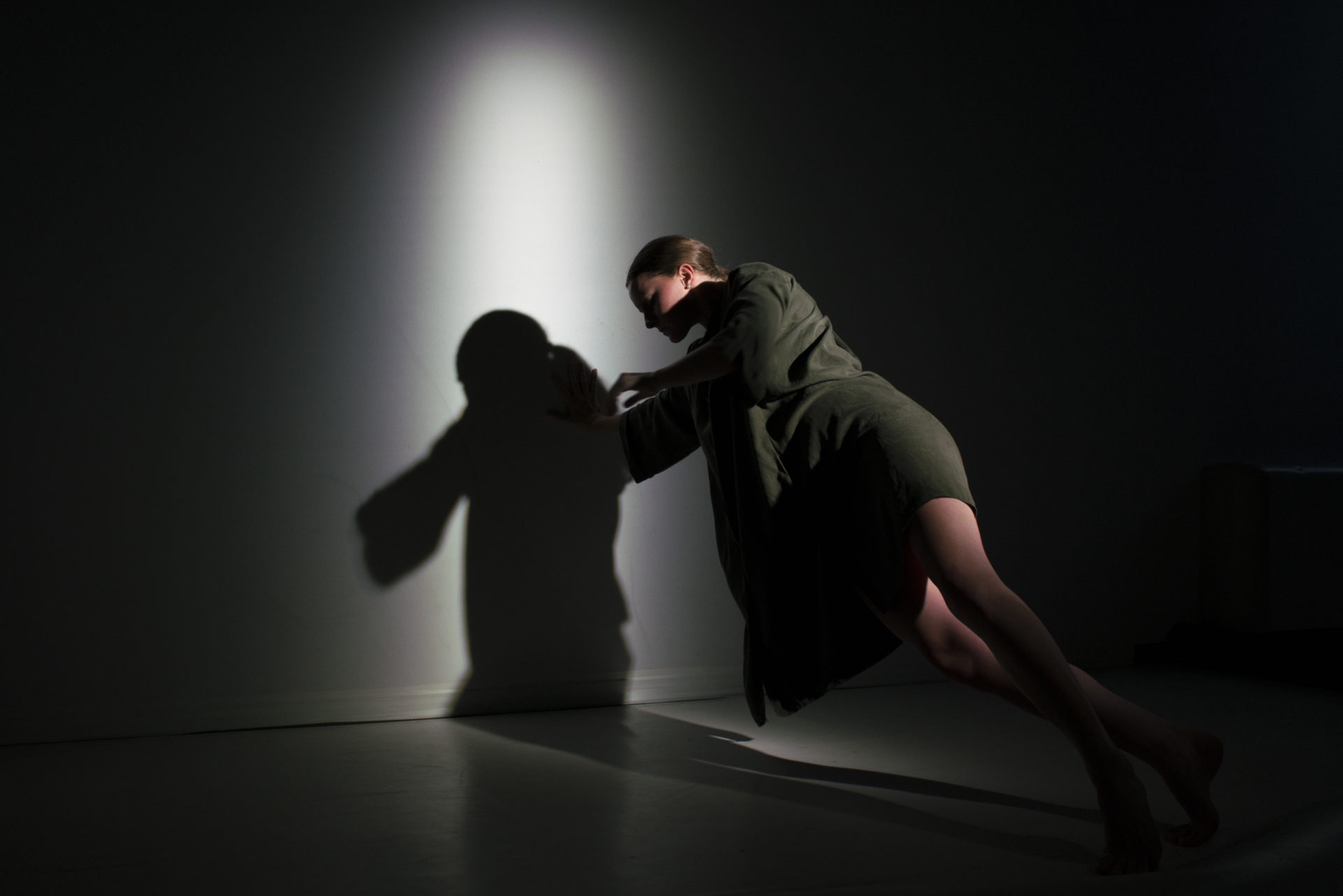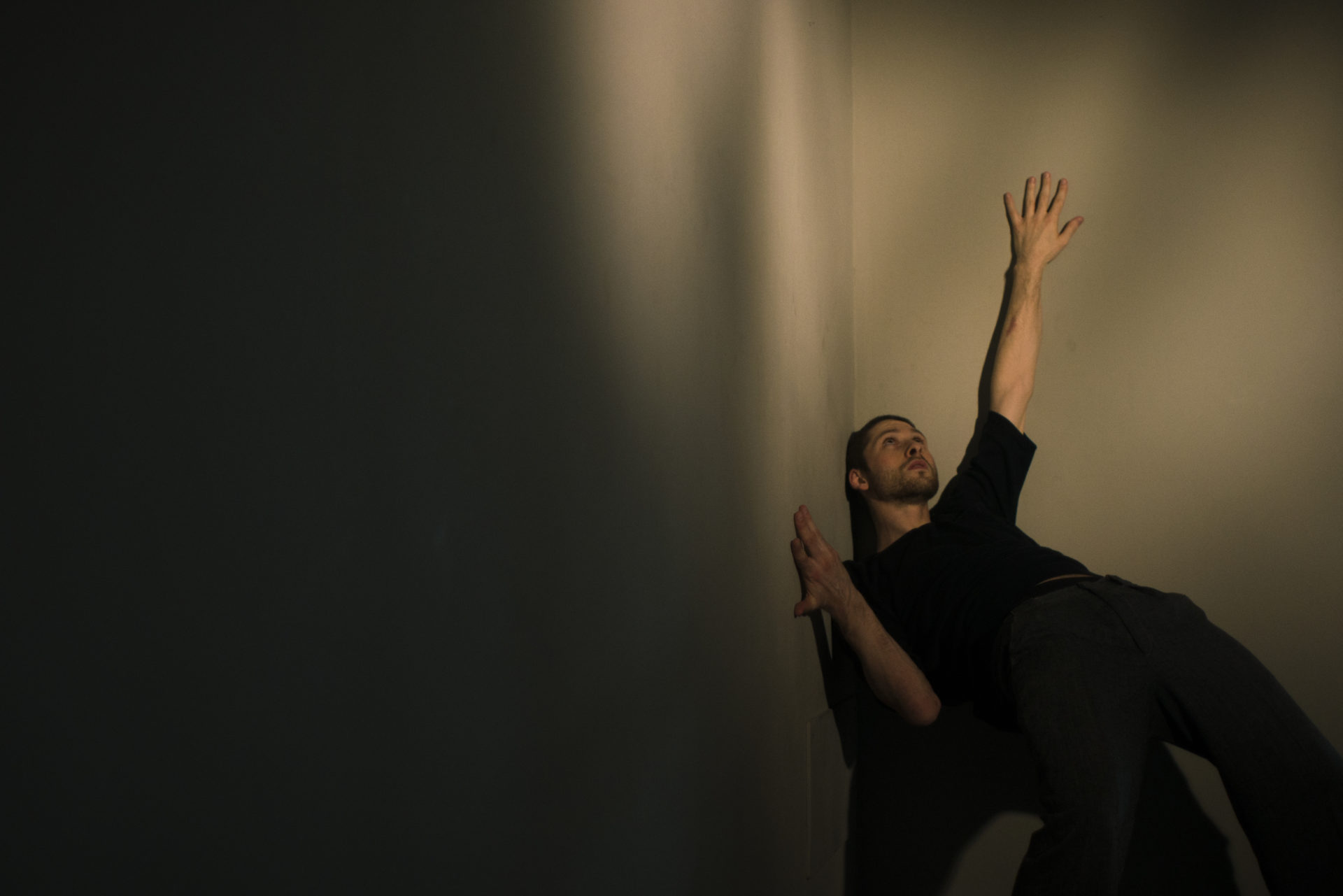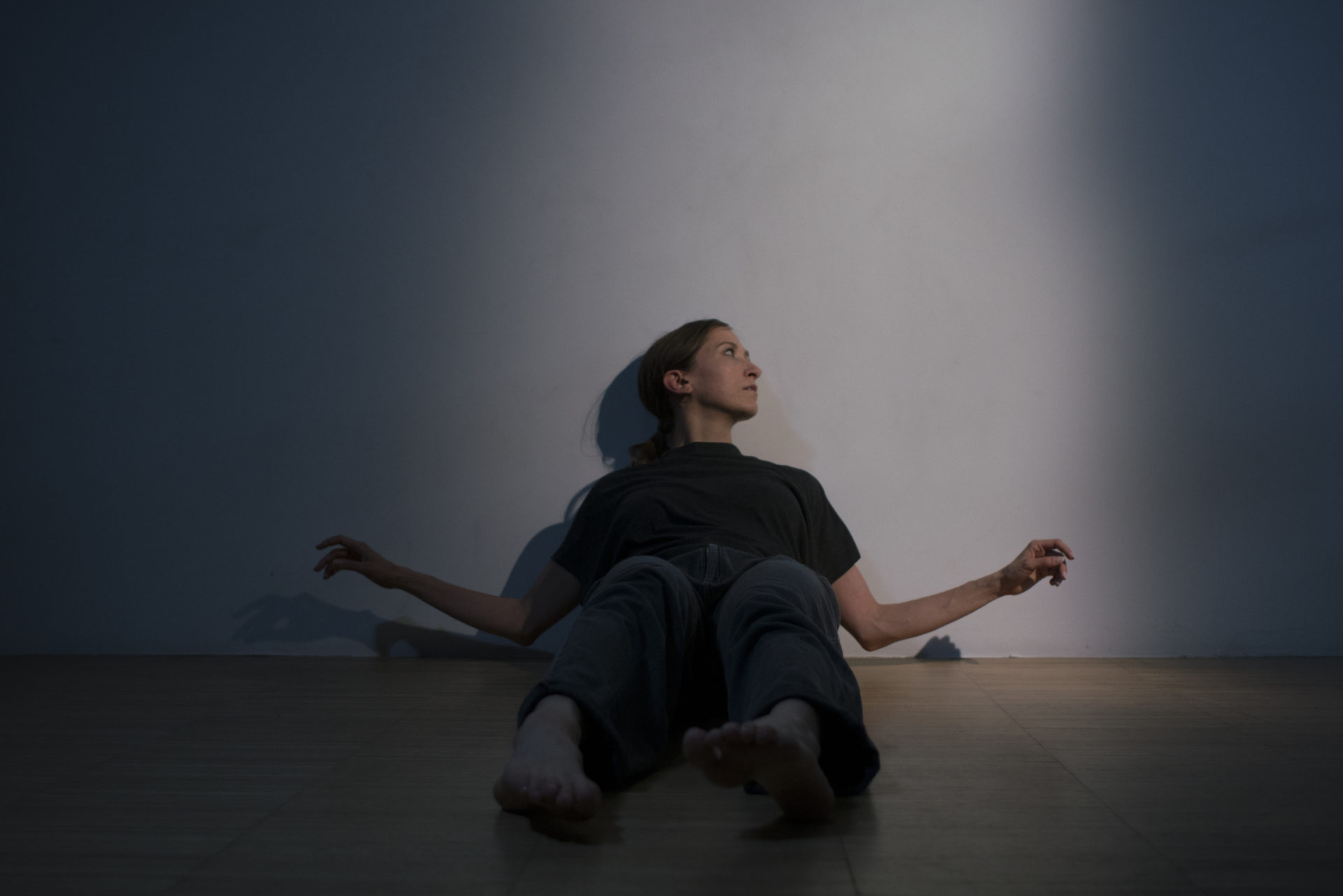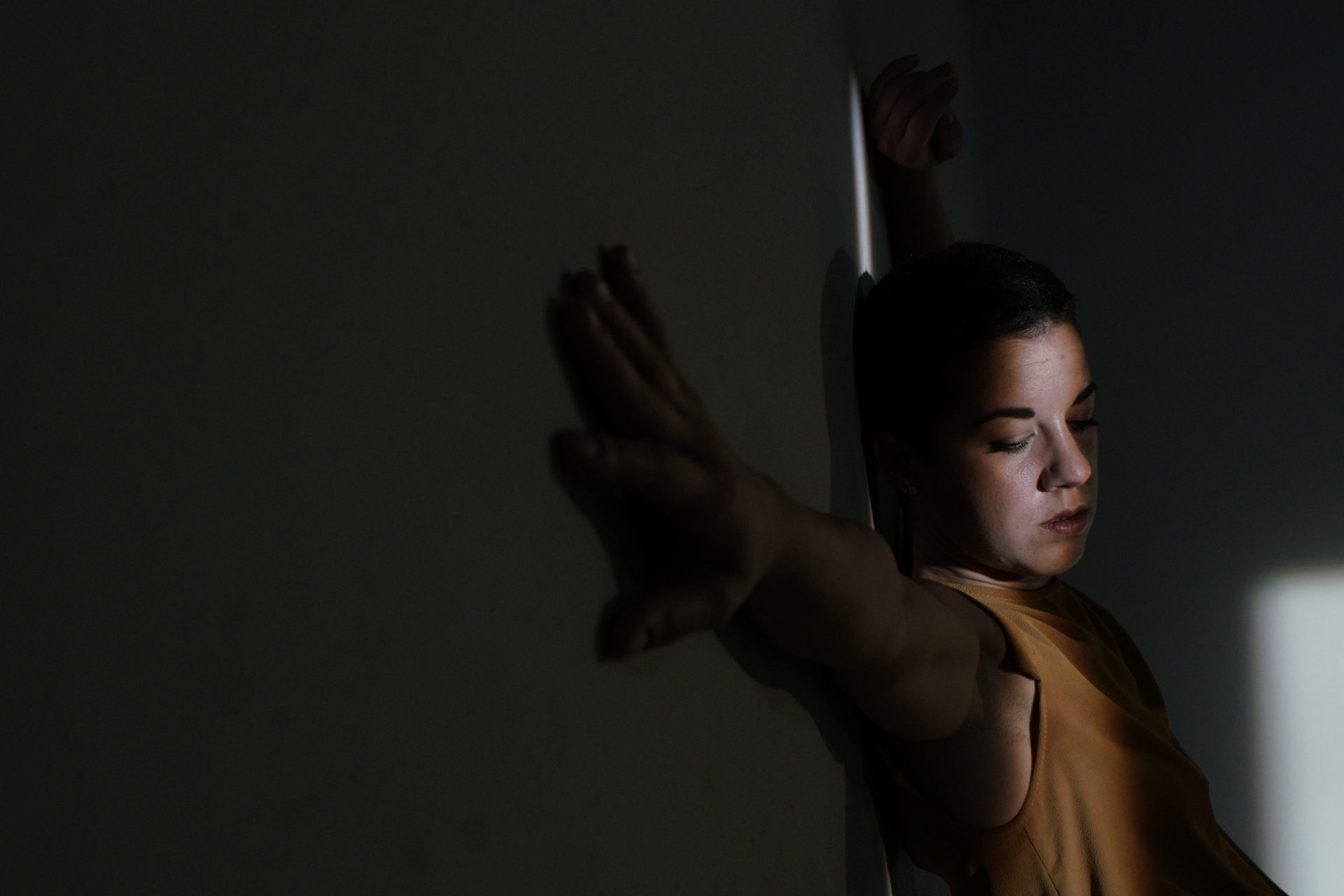Four languages meet, and offer their contribution to a “time & site specific” creation, born at the time of isolation, but gradually became an articulated and complex research site.
A story (by Simone Giorgi) of loneliness feelings chasing each other from one side of the walls to the other, on the thread of great pieces of repertoire (Ludwig van Beethoven) or music written for the occasion (by Fabio Massimo Capogrosso).
Here is the cue for the choreographic research (by Saul Daniele Ardillo) around the body of dancers, who are isolated from an epidemic in the spring of 2020, but could be isolated in any spring of their (and our) life. Under the gaze and at the editing pace of Valeria Civardi. With the suggestions of a painting by Luisa Rabbia, evocative and material at the same time.
The Fondazione Nazionale della Danza / Aterballetto of Reggio Emilia and La Toscanini of Parma are working together in May and June for a “dance and music (video)creation” with the dancers of the company and the musicians of the Filarmonica Arturo Toscanini, with the support of Collezione Maramotti and the production partnership of Ravenna Festival.
This new “remote creation” premieres on RAI5 on June 25th 2020, h 9.15 pm.
THE OTHER SIDE
Concept Saul Daniele Ardillo and Simone Giorgi
Choreography Saul Daniele Ardillo
Dramaturg Simone Giorgi
Filmmaker – editing Valeria Civardi
Music Ludwig van Beethoven (Sonata in E flat major n. 26 Op. 81 “Les adieux” – II movement – Andante Espressivo; Trio in C minor n. 3 Op. 1 – IV movement – Finale Prestissimo; Symphony in A major n.7 Op. 92 – transcription for trio – II movement – Allegretto)
Original music composition Fabio Massimo Capogrosso
With the collaboration of Collezione Maramotti, Reggio Emilia
Thanks to Luisa Rabbia for the artwork
LOVE
2017
colored pencils, acrylic, fingerprint on canvas
274 x 513 cm
© Luisa Rabbia
Dancers Noemi Arcangeli, Damiano Artale, Estelle Bovay, Hektor Budlla, Martina Forioso, Clément Haenen, Philippe Kratz, Ina Lesnakowski, Grace Lyell, Ivana Mastroviti, Giulio Pighini, Roberto Tedesco, Hélias Tur – Dorvault, Serena Vinzio
Musicians Mihaela Costea (Violin), Pietro Nappi (Cello), Orazio Sciortino (Piano)
Idea and project Gigi Cristoforetti & Alberto Triola
Artistic coordination Sveva Berti, Andrea Pecchio, Giulia Bassi
Production Rossella Caldarelli & Giuliano Scalisi
Technical director Marco Palermo
Communications Raffaele Filace & Maddalena Massafra
Press Office Stefania Catellani & Giulia Bassi
And all staff of Fondazione Nazionale della Danza / Aterballetto and La Toscanini
Premiere June 25th 2020, Rai5
A production Fondazione Nazionale della Danza / Aterballetto and La Toscanini
With the support of Collezione Maramotti, Reggio Emilia
In production partnership of Ravenna Festival
Executive production Fondazione Nazionale della Danza / Aterballetto
Sponsor ADAM shoe design
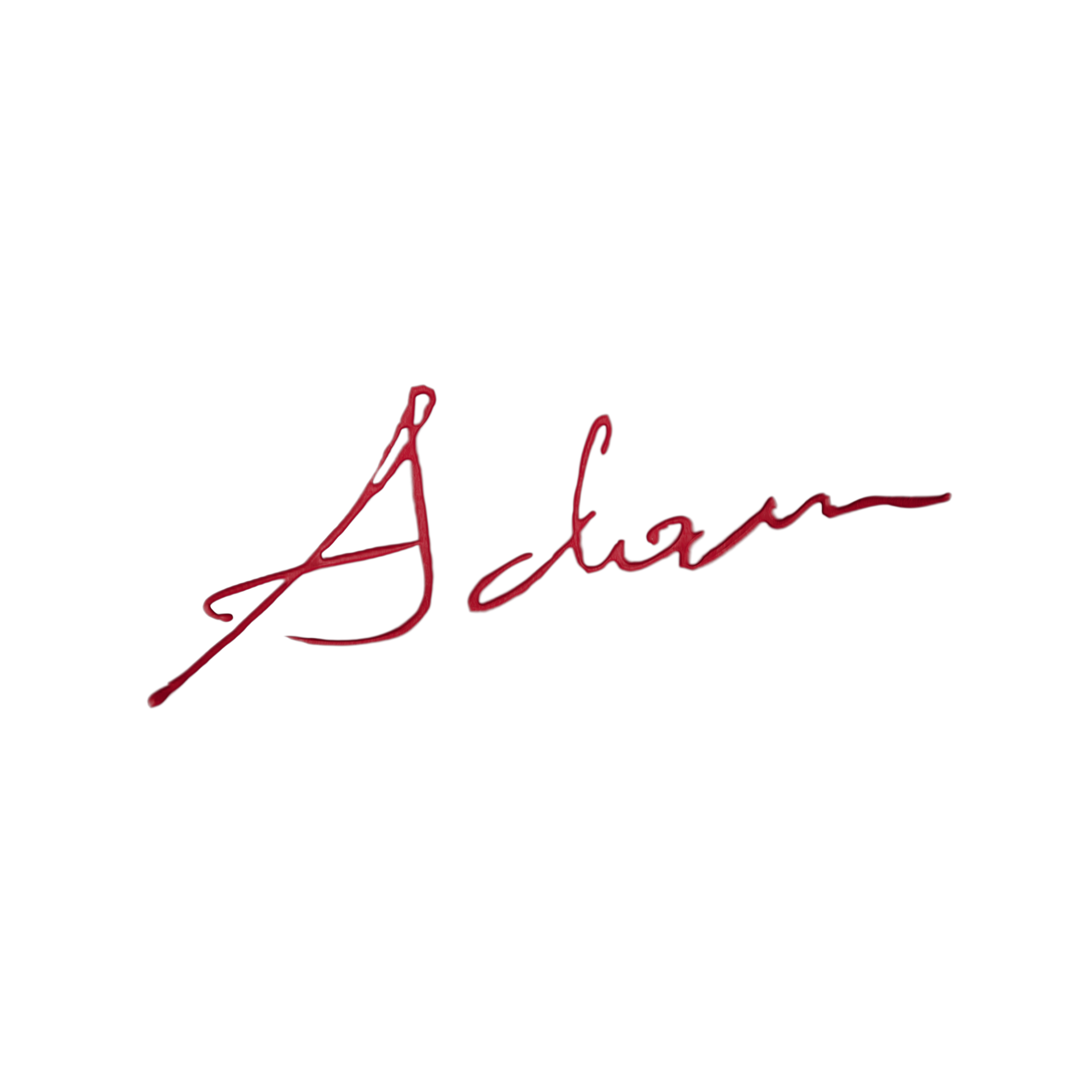
Finding words to describe an experience or an artistic process has always been a difficult task for me.
I’ve always preferred images, movements or melodies that express feelings… so I’ll try to go down this road.
I felt that all the artists involved in this project were travelling on many parallel tracks, but all at the same speed, all with the same intention.
Paradoxically, this situation of slowing down, closure and isolation created the opposite effect: it taught us how to communicate, so it heightened listening and empathy. It was “easy” but above all fun to teach movements in videoconferencing, for the joy of doing it but also for the joy of seeing empathy in doing it.
The same experience occurred with the composer Fabio Massimo Capogrosso, he only needed two phone calls to understand the idea of the project and write a small masterpiece.
It is just like what is told about blindness, it enhances the other senses.
Saul Daniele Ardillo
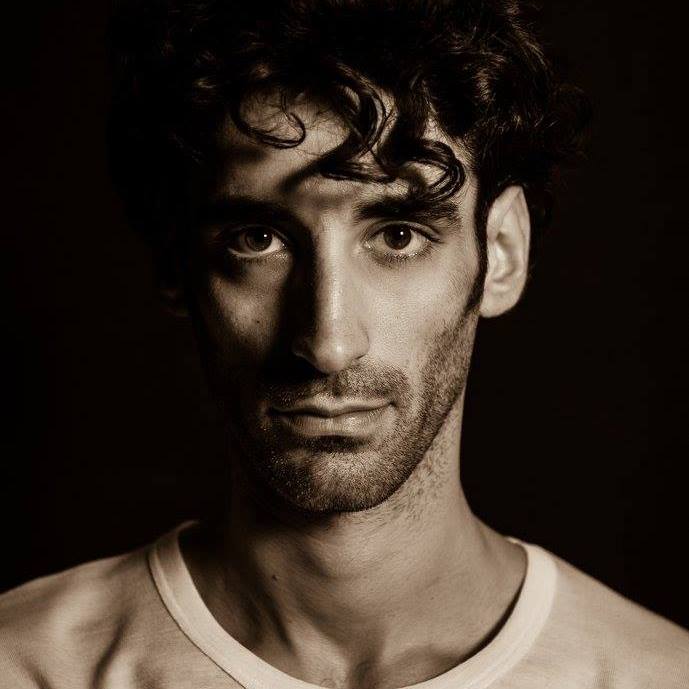
ph. Alessandro Calvani
How to stick together? How to stay together even during this forced separation?
This video/dance project starts from here, from the desire to build a work that unites body language, music language and audiovisual language, to give back to the public and to ourselves that idea of the whole – to be together and to be a whole, a living whole greater than the sum of its components – that we look for in dance.
We started from a simple image. A wall separating two rooms. A wall separating two people: two human beings in two adjoining but not communicating rooms, except for that same wall that divides them. Two human beings very close yet unreachable to each other.
It is an idea that we could have realized in theatre, with a wall separating two performers. An idea that, thinking of an audiovisual product, even today, with the limitations that we have, is feasible almost as if those limitations did not exist, and at the same time it makes sense: in an audiovisual product, for two people to appear separated by a wall, it is not necessary that they are really one on this side and one on the other side of the same wall, as long as they are filmed and edited in the right way.
It is the editing, and therefore the eyes of the viewer, that will hold together what is not together. It will be the eyes of the viewer that will allow us to be together again. To show us what we have always been. What we want to be again.
Simone Giorgi
In restarting the collaboration with La Toscanini, after the forced interruption, I am happy to work together with a company of such high level as Aterballetto for a production that involves three artistic expressions: dance, music and video projection. That’s what I needed! It gave me courage, it’s making me feel alive!
Among the many ideas that the dramaturgy suggested there is certainly a due homage to the figure of Beethoven, whose music is the basis of Daniele’s choreography. For me, author of the last painting, this thought has been concretely translated into a quotation: a rhythmic engraving of the Scherzo della Sinfonia n.9. The choreographic path is expressed by moments of great bewilderment, alienation, frustration and anger caused by the impossibility to communicate and finally, as far as I am concerned, borrowing the Beethovenian example, I tried to express the idea of overcoming this pain, through music. So from a percussive and strongly dissonant language we pass to moments of greater openness and brightness.
I love writing for dance, I would say naturally, because all my works are based on rather evident musical “gestures”, “gestures” that the choreographer or dancer (and not only) can easily grasp. The constant confrontation with Daniele through the sending of video clips, the exchange of ideas and reflections, was fundamental to get to know in depth his dramaturgical and choreographic idea.
Reiterating the natural communicability of my music, there is, however, a substantial difference between my other works, mostly dominated by harmonies and dark colors, and this work that also requires bright atmospheres. The search for a language that is in some ways distant from my sound universe has been an extremely stimulating challenge.
The sense of drama, the limit and the will to overcome it are also expressed by an instrumental virtuosity that the performers face with great mastery.
Fabio Massimo Capogrosso
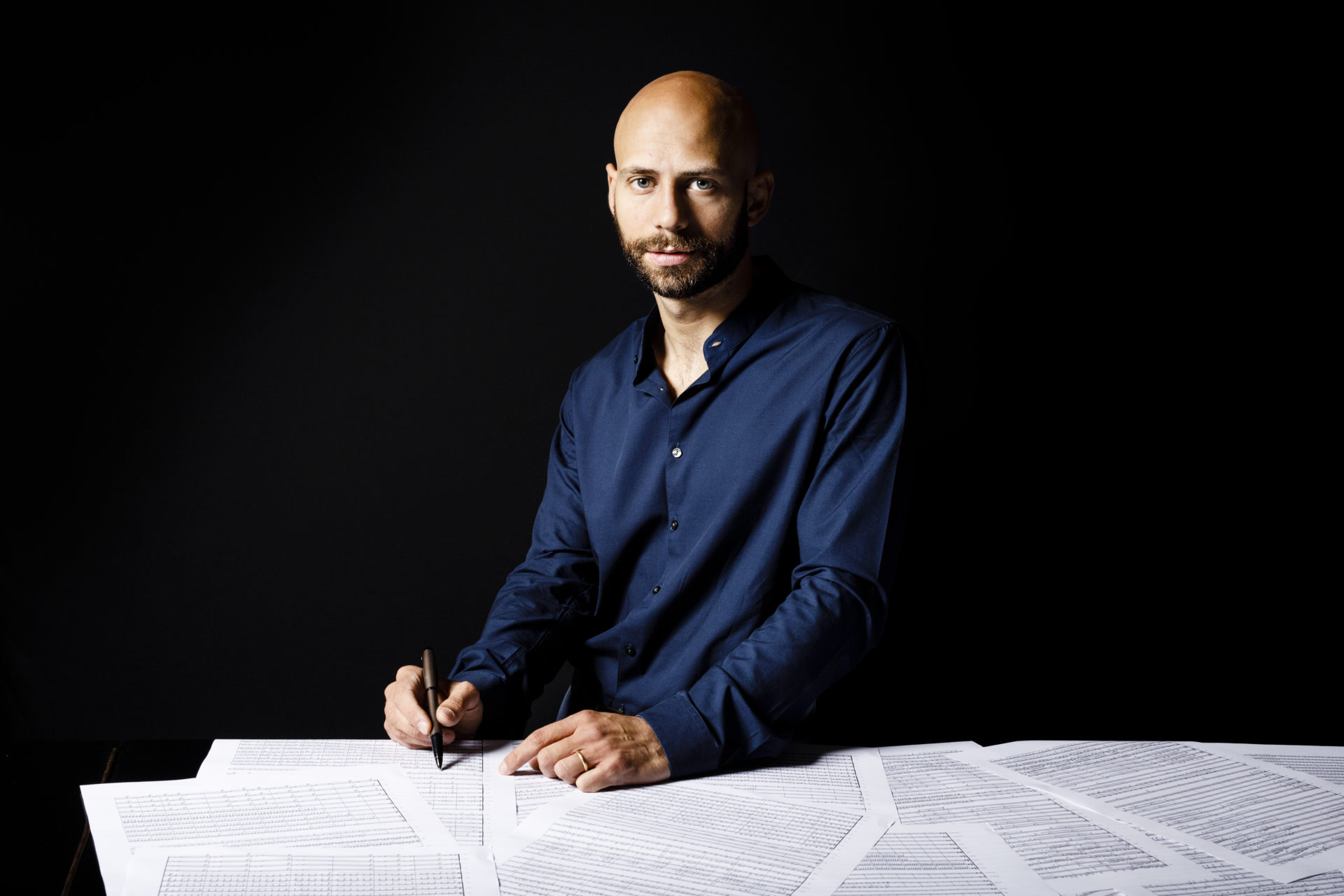
ph. ©Flavio Ianniello
The dialogue with La Toscanini has already begun and we are particularly interested in it. In this period we are doing almost nothing of what we had planned. A disaster from which we do not let ourselves bend, and we take advantage of it to deepen artistic dimensions that we care a lot about, for which there was never time. Screendance, in particular, allows us to relate with new audiences, and interdisciplinary dialogue is one of the most important bets of the contemporary world. That’s why I’m particularly happy that Ravenna Festival, our stable partner, accompanies us when we have to postpone the premiere of Don Juan (which was scheduled in June at the Teatro Alighieri in Ravenna), and that the Collezione Maramotti is also our partner, adding a language and an artist to the project.
Gigi Cristoforetti
Managing Director – Fondazione Nazionale della Danza / Aterballetto
The opportunity to collaborate with the Fondazione Nazionale della Danza / Aterballetto came at a particular time, even if the idea of doing so, at long range, had already been initiated months earlier. The project brings creative energies into play in the strictest sense. Together with the dance company, three of our musicians are taking part and in addition to the tribute to Beethoven, it also presents the music of Fabio Massimo Capogrosso (our composer in residence for this season) with a specially designed work. In time of isolation, the new creation welcomes and then releases a strong tension that turns into the harmonic tension of a soul called to find and be with all the other voices involved: musicians, dancers and audience.
Alberto Triola
Superintendent and Artistic Director – La Toscanini
The large painting Love by Luisa Rabbia is a part of the trilogy Love-Birth-Death realized by the artist between 2016 and 2017; it was exhibited for the first time at the Collezione Maramotti from October 2017 to March 2018.
In her work Rabbia reflects on the existential condition, the connection between human beings and their environment. Her works evoke web-like membranes made of delicate markings that co-exist with abrupt breaks and amputations made with decisive lines, and with fingerprints that lead us into the heart of a nebula, a fluid and organic structure that is both intimate and social.
The artist’s use of blue cites interior worlds, blood in veins or sap running in deep roots. But blue is also the color of a universal skin, stretched out until it becomes a thin and fragile landscape.

In her latest project—Love, Birth, Death (which recalls another Eliot’s line, in Fragment of an Agon: “birth, and copulation, and death”), Rabbia intensifies the inscription of the human/vegetal/earthen microcosm of the 2014-15 paintings with a potentially macrocosmic iconography. This thematic expansion has, perhaps necessarily, a physical correlative in the pictorial one: Love (2017) is a 108×202 inch canvas that for its full diagonal (a size thus bigger than its width) is occupied by two hyperhuman bodies so interlaced that if an attempt were made to unite in a diagram their sticking out points these would form the equivalent of a sephirotic tree.
Love imagines (puts into image) the initial/initiating couple, a copula of earth and sky; the woman is made of earth, vegetation, humus, roots, the man is an ethereal body, made of star dust. The primal couple not yet emerged from Chaos, of indistinct anatomies, suspended in a space and a time not yet divided into opposing modalities, and crossed like lightning or a tree trunk by the axis of the world.
To measure its archetypal/future temperature, Love must be seen in contrast to the original couple in Egyptian icono-cosmology where the sky (Nut) and earth (Geb) are separated by Ra, the sun god. In the imaged Egyptian myth, which has now become part of the pop imaginary, Nut is a nude, overarching woman who personifies the celestial vault while Geb is a man lying on the earth with his sex erect. In Rabbia’s painting, the original couple is imaged in a state antecedent to any division of being into the duality created by the advent of time.

The bodies in Love rise up or fall into a stellar/arboreal/acqueous pictorial amnion, in a state of un-otherness; their legs are folded and crossed in an X-shape (the spider’s stratagem according to the Kamasutra?), while their clasped hands draw together with the arms a quadrangle that we might describe as knotbby: the two torsos form opposite acute angles whereas the hands are clasped in opposing obtuse angles. The head of the woman, in constant expansion, falls in the picture’s lower left corner; that of the man, undergoing a contraction, springs toward the upper right corner. The two torsos interlock, with both legs of the woman folded while one of the man’s legs stretches out, and appear anatomically undifferentiated—the only heightened details are the excessive nipples—thus alluding perhaps to an original/final androgyny. These are bodies of plasmatic consistency, anthropomorphic nebulae in the process of becoming fully human, ethereal bodies close to accessing the astral body, or vice versa. The Bible would not have a name for them, for they imply a pre-Adamic stage and yet have been inscribed for centuries, for millennia even, in history, which is the history of painting.
The fishbone/spine of dark energy that diagonally crosses the joint bodies, the picture’s axis both physical and metaphysical, which had appeared in an embrionic state in NorthEastSouthWest, converges analogically here with the mystical/mysterical energy that kundalini generates in bodies intertwined in tantric ecstasy: it becomes the tree of inner life. The liquid sky or the celestial water in which the hierogamy of Love takes place, from which the lovers emerge, is the hieroglyph of a mythical, resistant pictorial space, a space that suspends painting between a barely begun past and a future already finished.
From the text in the catalogue Blue. The Resistance of Painting by Mario Diacono, in “Luisa Rabbia. Love” (Cinisello Balsamo, Milano: Silvana Editoriale; Reggio Emilia: Collezione Maramotti, 2017): 26.
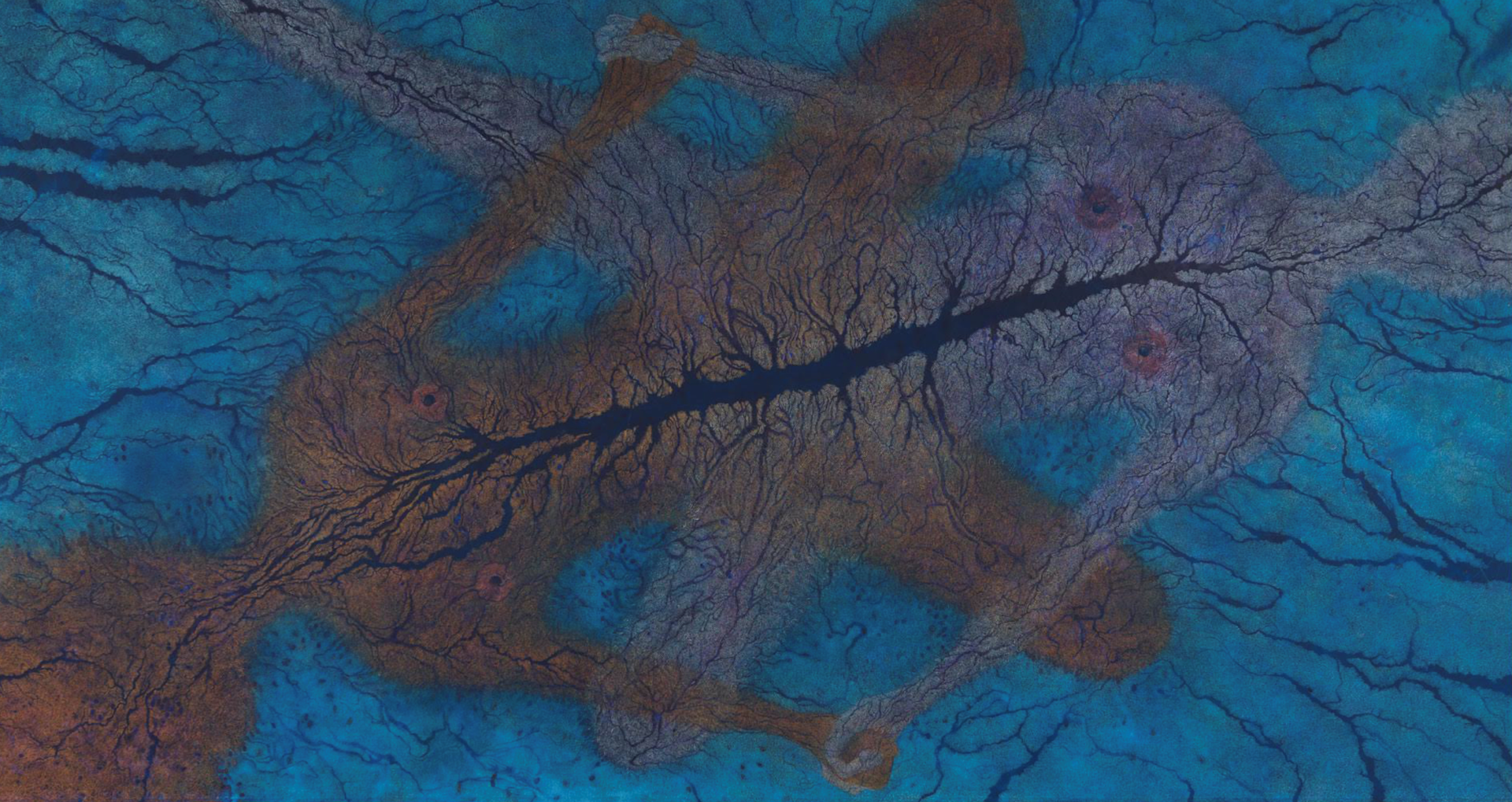
Collezione Maramotti – Love – 2017 – colored pencils, acrylic, fingerprint on canvas – 274 x 513 cm – © Luisa Rabbia
